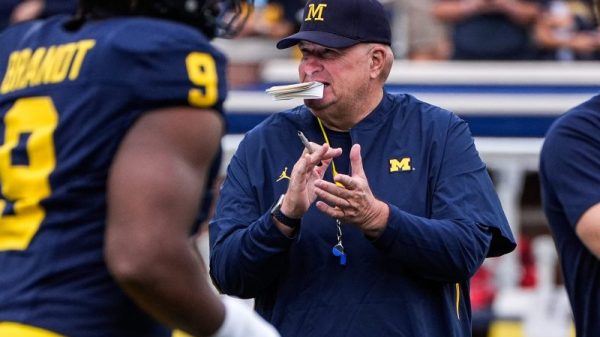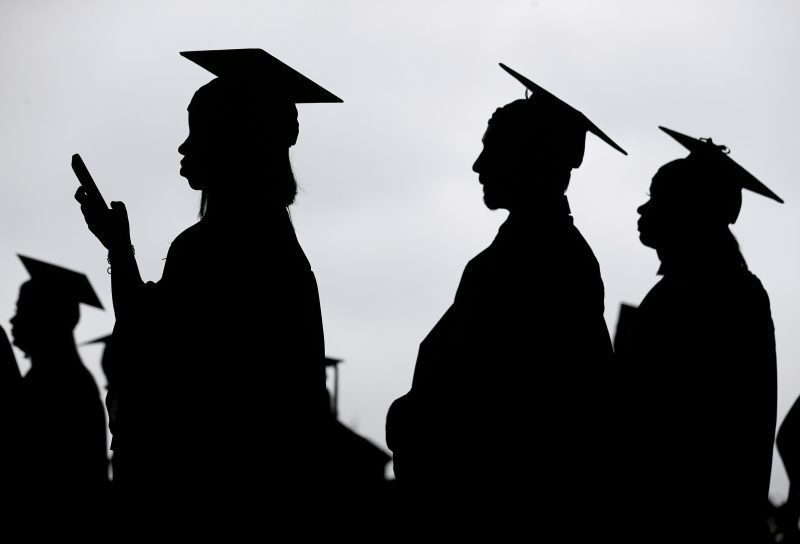Elon Musk, unlike most users of the social media platform he owns, has an incentive to tweet controversial opinions. The more he riles people up, the more people engage on Twitter. It’s hate-clicks as a business strategy — a strategy that he is by no means the first to deploy.
It’s also clear that much of his advocacy of contentious claims is rooted in his actual beliefs. So when he tweets something like the offering below, shared on Wednesday, it seems fair to assume that it’s a reflection of what he thinks.
Parents don’t realize the Soviet level of indoctrination that their children are receiving in elite high schools & colleges! https://t.co/xhpmNanp6b
— Elon Musk (@elonmusk) March 14, 2023
Since assuming control of Twitter last year, Musk has made clear that his political predilections lean right, as indicated above. He’s sharing a story from the right-leaning publication Free Beacon framing a student protest at Stanford University in negative terms. To that, Musk adds his thoughts: This is a reflection of the “Soviet level of indoctrination” that students get at elite educational institutions.
This, too, is a common thread in Republican politics at the moment, the idea that young people are learning to be liberal in school, a function of hyperactive left-wing indoctrination at the hands of educators and administrators. But, as it turns out, there’s not actually much evidence that this is happening — and there are lots of other explanations for the politics college-age Americans espouse.
Musk’s tweet centers on the reaction to a reaction to a controversy that emerged when the Stanford Law School’s Federalist Society invited conservative judge Kyle Duncan to speak.
This is generally acknowledged by both left and right as having been an invitation rooted to at least some extent in a desire to provoke controversy, and it succeeded. Duncan’s presentation devolved into confrontation between himself and his largely unsympathetic audience, with each side assigning blame to the other. (The point here is not to adjudicate this; assessments of culpability are available elsewhere.) The school apologized to Duncan and students objected to the apology.
It’s important to contextualize the protest, though, since that’s the center of Musk’s complaint. It is by no means new that college students should protest a speaker on campus. A quick review of the archives of the New York Times shows similar confrontations in 1964 (at Notre Dame University, against segregationist George Wallace), 1970 (at Monmouth University, against a former chairman of the Joint Chiefs of Staff) and 1971 (at Cornell University, against New York Mayor John Lindsay). There are unquestionably other examples from the same period and later, but three seemed like enough to make the point: This is a long-standing pattern.
In fact, there’s an important, pertinent reason that such protests emerged at that point in time. Thanks to the baby boom, the number of young people had surged and the number of them who went to college did as well.
In 1950, there were about 2.3 million people enrolled in college, 11 percent of the population ages 16 to 24. By 1970, there were 8.6 million college students, 26 percent of the population in that age range, which itself had increased by 61 percent. There were a lot more college students and, so, a lot more opportunities for confrontation.
What occurred at Stanford wasn’t a function of “indoctrination,” Soviet-level or otherwise. Since 1970, the percentage of young people who attend college has only grown along with the total number of students. The ability to organize protests has similarly increased, thanks to tools like Twitter. It is therefore easy to fill a room with students who disagree fervently with Duncan’s politics. It’s not complicated.
Musk’s tweet picked a poor vehicle to make a broader point: that institutions are pushing young people to the left.
Florida Gov. Ron DeSantis (R) has been elevating this idea that colleges were indoctrinating students as well, a claim that’s in keeping with his efforts to appeal to conservative voters by attacking the political left. It’s appealing to right-wing figures like DeSantis and Musk to suggest that this is a function of what’s being forced upon students by teachers; it suggests that younger Americans skew left not out of preference but because they’ve been brainwashed against the right’s better arguments. But there’s not much evidence for the idea.
It is the case that people with college educations are more likely to be liberal than Americans without degrees. But that’s correlation, not causation.
Last year, researchers from the University of Texas and Trinity College Dublin published a novel experiment evaluating possible causation; that is, whether college education moves students to the left. They looked at 1,500 college-age students in Romania, where college attendance is largely dependent upon passing the country’s baccalaureate exam. They assessed party membership among those who’d barely passed or barely failed the exam, finding that those who barely passed were more likely to be members of more-liberal political parties.
“We found that attending university causes people to support more liberal policies, at least along the cultural dimension,” study co-author Stephen Jessee — himself a Stanford graduate — explained in a phone call with The Washington Post last month, “although not necessarily along the economics dimension.”
But, he acknowledged, the effect was subtle.
“This is not going from supporting a fairly liberal party to a fairly conservative party,” he said, “but it’s going from being somewhat more likely to support a moderate party to being more likely to support a somewhat liberal party.”
What’s more, while the study had the advantage of directly measuring partisan affiliations of those more or less likely to attend college, it didn’t necessarily disentangle other factors. One of the theories behind the liberalizing effects of college, for example, is that it introduces urban or urban-like environments to people from more rural backgrounds, increasing cultural empathy. The parameters of the research conducted by Jessee and his peers didn’t allow for nuances like that to be determined with significance.
Much of the available research on this question attempts to separate out other factors to assess the role of the education itself, with competing or incomplete results. The challenge of this is obvious: How do you identify the curriculum as a driver of politics when so many other possible factors are present?
One particularly flimsy attempt to prove the Musk-DeSantis point was offered in reply to Musk’s tweet from Fox News host Will Cain, who offered up a segment from the network that used a study by the Manhattan Institute to suggest that indoctrination efforts were rife in schools. If the name of that organization sounds familiar, it’s perhaps as the home of right-wing activist Christopher Rufo, the force behind the right’s focus on “critical race theory” and an adviser to DeSantis.
The Manhattan Institute asserted that 93 percent of college-age students surveyed had heard an element of “critical social justice” from an adult in school. This is a bespoke term used by the institute to further broaden its already overinflated “critical race theory” definition and refers to a clutch of statements like “America is a patriarchal society.”
The mechanism for evaluating this was a survey in which respondents were presented with phrases along those lines and asked if they’d been taught the idea in class or otherwise heard it from an adult at school. The loopholes here should be obvious.
For one, how many people you know could identify the source of a claim they’d heard, much less distinguishing between hearing it taught in class from hearing it elsewhere?
For another, the study (presumably intentionally) fails to distinguish between hearing a specific bit of rhetoric with hearing about similar-sounding rhetoric. Perhaps a student heard a few years prior — maybe even in school! — that male-dominated systems were patriarchal. They might certainly say that, yes, they learned that “America is a patriarchal society” in school.
Perhaps the most important cautionary note here is that the Manhattan Institute is an obviously biased source. There’s no obvious reason to doubt that the specific responses to its survey weren’t what is suggested, but there’s lots of reason to consider its analysis of those results as unreliably subjective. It claims to have found, for example, that respondents were more likely to report learning concepts related to gender in school when they lived in more Democratic places.
“[L]ocal partisanship does meaningfully affect … classroom exposure to the radical gender-related concepts,” they write — as though the causality was established and that they’ve disentangled the possibility that, say, these student responses reflect cultural values present in their communities and not something a teacher told them to think.
Younger Americans generally are more liberal than older Americans. They are also more likely to have college degrees. They are also more likely to live in cities — in part because they went to college — and to be nonreligious and to be Asian, Black and Hispanic. Where does the causality lie? Even among older Americans, after all, even among those of the age that might have participated in that protest against George Wallace at Notre Dame, people with college degrees are more likely to be liberal. Is this because they, too, were indoctrinated 60 years ago? Because they were taught “critical social justice” from activist teachers in 1974?
The Manhattan Institute has gotten a lot of traction out of the idea that insidious forces are trying to push America to the left, as has DeSantis. Musk, as he often does, is offering a controversial take in line with that undercurrent, probably in part in the hope that people will be outraged. But the liberal politics of younger Americans exist outside of college education.
In the General Social Survey results from 2018 and 2021, younger Americans with a high school degree or less were about 9 points more likely to identify as Democrats or Democrat-leaning independents than as Republicans or Republican-leaning. Among older Americans with a high school degree or less, partisanship was split. This is even without introducing factors like income or race.
Perhaps this, too, is a function of high-quality, effective indoctrination at America’s often-criticized high schools. It seems fair, though, to suggest that the burden of proof rests with those who would make that argument. And that the burden remains entirely unmet.



























